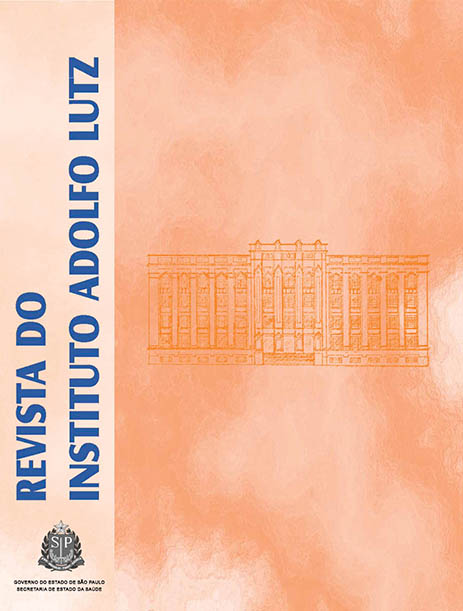Abstract
Amphibians exhibit two types of cutaneous glands: mucous and granular. The secretion produced in their skin glands exhibit several chemical components. These substances have been studied regarding biological activity, showing aenesthetic, hallucinogen and antimicrobial effects, among others. Due to the diversity of Brazilian species, and considered that only few studies assessed this issue, the present study aim to investigate the antimicrobial activity of the poison produced by the parotoid macroglands of the toad Rhinella icterica originated from Rubião Júnior, Botucatu, São Paulo state. We assessed the effect of different poison concentrations on Escherichia coli e Staphylococcus aureus cultures, as well as the time required for antimicrobial action to perform. R. icterica poison presented weak antimicrobial activity for both bacteria considered, with a stronger effect on S. aureus. The poison acts in concentrations higher than 50 mg/mL, with a larger effectiveness at 100mg/mL. Time required for action was equal or superior than 30 minutes for S. aureus and superior than 15 minutes to E. coli. These data may support future studies involving the isolation of the substances confering antimicrobial activity to the poison of R. icterica, as well as the minimum concentrations required for the refered action.
References
1. Monti R, Cardello L. Bioquímica do Veneno de Anfíbios. In: Barraviera B, editor. Venenos Animais: uma visão integrada. Rio de Janeiro: EPUC; 1994. p. 225-32.
2. Toledo RC, Jared C. Cutaneous granular glands and amphibian venoms. Comp. Biochem. Physiol. 1995; 111(1): 1-29.
3. Toledo RC. Breve apreciação sobre a secreção cutânea dos anfíbios. Ciência e Cultura. 1984; 38: 279-84.
4. Daly JW, Myers CW, Whittaker N. Further classifi cation of skin alkaloids from neotropical poison frogs (Dendrobatidae), with a general survey of toxic/noxious substances in the amphibia. Toxicon. 1987; 25(10): 1023–95.
5. Park CB, Kim MS, KIM SC. A novel antimicrobial peptide from Bufo bufo gargarizans. Biochem. Biophys. Res. Commun. 1996; 218: 408-13.
6. Pough FH. Salamandras, Anuros e Cecílias. In: A vida dos vertebrados. São Paulo: Atheneu; 2003. p.346-55.
7. Conlon JM, Kolodziejek J, Nowotny N. Antimicrobial peptides from ranid frogs: taxonomic and phylogenetic markers and a potencial source of new therapeutic agents. Biochimica et Biophysica Acta. 2004; 1696(1):1-14.
8. Rieira AS, Daud A, Gallo A, Genta S, Aybar M, Sanches S. Antibacterial activity of lactose-binding lectins from Bufo arenarumskin. Biocell. 2003; 27(1): 37-46.
9. Nascimento ACC, Zanotta LC, Kyaw CM, Schwartz ENF, Schwartz CA, Sebben A, Sousa MV, Fontes W, Castro MS. Ocellations: New antimicrobial peptides from the skin secretion of the south american frog Leptodactylus ocellatus (anura: Laeptodactylidae). The Protein Journal. 2004; 23: 501-08.
10. Nadaleto D. Avaliação da toxicidade do veneno de adultos de Bufo ictericus Spix, 1824, criados em cativeiro desde a fase larval e de sapos capturados no campo e mantidos em cativeiro. [tese de bacharelado] Botucatu, São Paulo: Universidade Estadual Paulista Julio de Mesquita Filho (UNESP), 2001.
11. Cunha Filho GSA, Schwartz CA, Resck IS, Murta MM, Lemos S, Kyaw CM, Castro MS, Leite JR, Pires JROR, Block JRC, Schwartz ENF. Antimicrobial activity of the bufadienolides marinobufagin and telocinobufagin isolated as major components from skin secretion of the toad Bufo rubescens. Toxicon. 2005; 45: 777-82.
12. Maciel NM, Schwartz CA, Junior ORP, Sebben A, Castro MS, Souza MV, Fontes W, Schwartz ENF. Composition of indolealkylamines of Bufo rubescens cutaneous secretions compared to six other Brazilian bufonids with phylogenetic implications. Comparative Biochemistry and Physiology. 2003; 134: 641-49.
13. Tempone AG, Pimenta DC, Ivo L, Patrícia S, Noemi NT, Heitor FAJR, Marta MA, Calos J. Antileishmanial and antitrypanossomal activity of bufadienolides isolated from the toad Rhinella jimiparotoid macrogland secretion. Toxicon. 2008; 52: 13-21.
14. Tanaka R, Weisblum B. Systematic difference in the methylation of ribossomal ribonucleic acid from Gram-positive and Gram-negative bacteria. Jornal of Bacteriology. 1975; 123: 771-4.

This work is licensed under a Creative Commons Attribution 4.0 International License.
Copyright (c) 2009 Instituto Adolfo Lutz Journal
